WoW Archivist: The curse of Karazhan
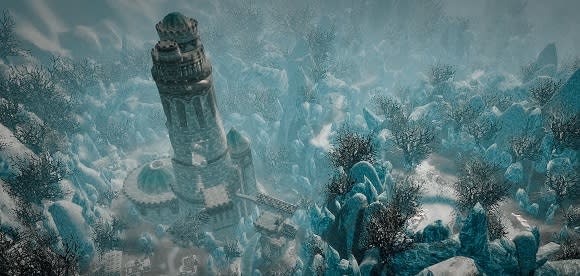
WoW Archivist explores the secrets of World of Warcraft's past. What did the game look like years ago? Who is etched into WoW's history? What secrets does the game still hold?
Something has been afoot in Karazhan of late. First, dataminers noticed that Karazhan had been renamed Medivh's Big Birthday Bash on the PTR. In the rechristened raid, objects such as cobwebs and skeletons had disappeared. Then a later build renamed it Karazhan 2: Eclectic Boogaloo. Senior game designer Jonathan Craft tweeted that fellow designer Dave Maldonado was responsible. Maldonado later said that nothing is happening. It turned out to be a test to see if a phased quest could be set there, but sadly it didn't work.
Many players would be excited to return to Karazhan, and it would make sense to do this in Warlords of Draenor. After all, Karazhan is from the same expansion that took us to the shattered remnants of Draenor back in 2007. Hopefully Blizzard will find a way to feature some Karazhan-based content during the next expansion.
Karazhan remains one of Blizzard's most popular raid zones, and for good reason. But did it succeed too well for WoW's own good? Let's look back at what Karazhan offered us in its prime and how it impacted raid design in future expansions.
The first real 10-man
The history of the Karazhan raid extends backward into classic WoW. The first caster legendary, Atiesh, was earned by very few raiders before the ability to earn it was removed. Those lucky few could use the staff to open a portal to Karazhan as an on-use effect.
Players received their first taste of level 68+ mobs outside of Kara. The patch prior to the official Burning Crusade release added high-level ghosts to Deadwind Pass near the tower. Level 60 players formed parties or solo-kited the ghosts and stocked up on otherwise unavailable Netherweave Cloth. During that time, it sold for outrageous amounts on the auction house.
Karazhan was the first raid designed specifically for the 10-man size. Most people think of Upper Blackrock Spire as the first, but Blizzard did not design it as such originally. It remained a 15-player experience from patch 1.3 to 1.10. Given that most raids required 40 players, UBRS didn't even really "count" as a raid in the eyes of many. It had no lockout timer either, so it was viewed only as a dungeon.
As a raid, Kara was highly controversial. Players who were accustomed to the 40-man raids of classic balked at the idea of fracturing their raid team down to such a miniscule number. They also didn't like the idea of epic tier gear dropping in what most still considered a "dungeon" -- even if it had a lockout.
Blizzard caused difficulties for guilds by designing Karazhan as part of the gearing and attunement process for larger 25-man raids. 25 does not divide neatly into tens, and many guilds found it difficult to make the awkward transitions from 40 to 10 to 25.
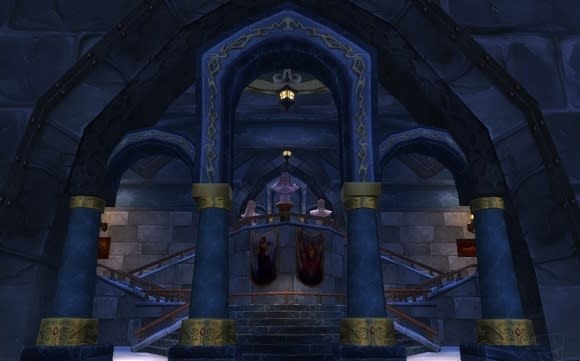
Into the tower
Despite the small number of players allowed to zone in, Karazhan was absolutely huge. Twelve boss encounters (with sixteen different bosses) inhabited sixteen different areas. What worked best about Karazhan's design is that each area felt organic in the context of a mage's tower residence. Nothing seemed to exist purely to house a boss. The stables, servants' quarters, guest quarters, banquet hall, theater, library, etc. all fit naturally into the zone.
Karazhan rewarded explorers. In this era of WoW, in-game dungeon maps did not exist, so raid teams had to find the secrets of Karazhan on their own. Also, since you could progress through the raid without killing all of the bosses, you weren't guaranteed to find them all on a first clear. In fact, only Moroes, The Curator, the opera event, and the chess event are mandatory to access the other bosses. If you didn't venture around (or look it up online), it was easy to miss the fact that the Maiden of Virtue waited in the room at the end of a tucked-away dead-end hall or that Illhoof lived behind a secret door.
The raid was so large that it was one of the first to have a "teleporter." Once you killed the Shade of Aran, Berthold the Doorman offered to escort you from the entrance to Shade's room.
The raid also featured a back door that allowed you to skip a long trash clear if you desired. However, to unlock the door originally required opening it from the inside, which meant a member of the raid taking one for the team by running through all the mobs. Then you could skip the upper balconies of the Opera House -- although those wealthy patrons dropped quite a chunk of change when released from their immortal torment.
All in all, Karazhan was an instant classic. It combined size, authenticity, unprecedented flexibility in choosing encounters, challenge (pre-nerf), and rock-solid boss design.

Unique ideas and WoW firsts
Karazhan had some unique elements that were brand new to WoW. One was the servants' quarters bosses. You summoned them by killing mobs of a specific type. Once killed, however, you could wait for the mobs to respawn and kill the boss again -- all without getting locked into a raid ID.
The loot was randomized in the same way as vanilla-era green drops. Most combinations weren't particularly desirable ("of the Whale," for example, provided spirit and stamina), and the bosses didn't drop Badges of Justice (The Burning Crusade's version of Valor points), so many raids skipped them. However, players would sometimes form PUGs to farm the area for Violet Eye reputation and Nexus Crystals. It was a way for players to raid without really raiding. For reasons only Blizzard knows for sure, they have never given us farmable raid bosses like this since.
Another innovation was the chess event. When Blizzard teased the chess event, players imagined all kinds of wild ideas about how it may play out.
Players controlled pieces on a giant chess board and dueled the Echo of Medivh who, being a villain, shamelessly cheated. Each piece had its own abilities that replaced a player's normal ability bars. From a certain point of view, this made the chess event the very first "vehicle" encounter in WoW.
Unfortunately, despite the cool idea, the chess event turned out to be somewhat of a disappointment due to its extreme ease of difficulty. Chess is a supreme game of strategy, but this encounter required very little.
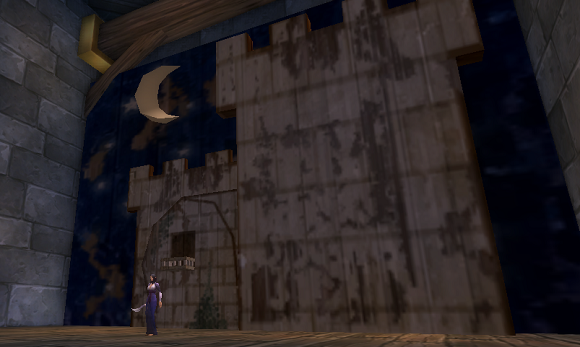
This evening's presentation
The opera event has been a fan favorite for many years. Part of its appeal was the presentation: the grand introduction of the announcer, the rising curtain, the spectacle of fighting on a stage before a ghostly audience (complete with applause and anxious murmurs), and the comically overwrought melodrama of the encounters, each one referencing a famous real-world story.
The other half of its appeal was that we didn't have to fight the same exact boss every week. Previously, this had only ever been done in Zul'Gurub for its optional Edge of Madness event. The opera event took the idea to the next level. Sure, you could send someone to die to see which performance the week featured without wiping the raid, but it was way more fun to make assignments on the fly before the spectral announcer finished his speech. (The Big Bad Wolf encounter wouldn't start right away, but the other two did.)
The randomness of the bosses helped to make Karazhan a more interesting run, especially since the three encounters had different loot tables. Some players complained about the fact that some weeks they had zero chance to get the drop they needed, but most felt that the tradeoff was worth it.
The other issue was that you had to listen to the announcer every time you pulled. This trend lasted all the way through Icecrown Citadel. After making us listen to the "We named him Dranosh" speech 500 times, Blizzard finally relented in Cataclysm and made RP speeches a once-per-clear event.
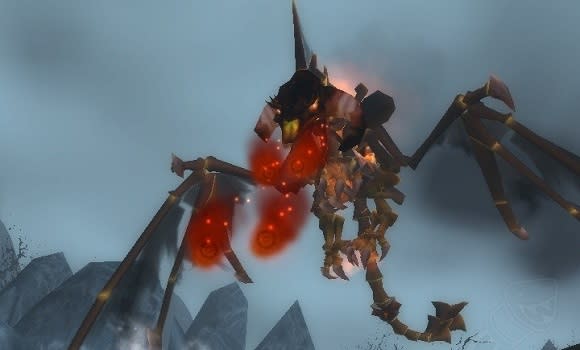
The secret sect
Karazhan had its own faction: the Violet Eye, a secret sect of Kirin Tor mages. As you gained reputation, the Violet Eye rewarded you with a better and better ring.
The Violet Eye also featured three Karazhan-related quest lines. The first was the attunement that provided the key to the front door. The second asked you to complete objectives inside the raid for the Violet Eye faction, culminating with a showdown with Prince Malchezaar. Completing this quest line awarded players with the Violet Badge resistance trinket that was useful versus certain bosses.
The third quest line required you to be honored with the Violet Eye faction to begin, and was important for raiders who wanted to transition into Tier 5. The quest line eventually rewarded you with the ability to summon the optional boss Nightbane. Defeating Nightbane and looting a Blazing Signet was part of the attunement for Serpentshrine Cavern.
Since Nightbane could only be accessed after spending a lot of time in Kara, players debated whether Nightbane was the true end boss of the raid. With his annoying fears and nasty add phases, he was certainly difficult enough to be considered such.
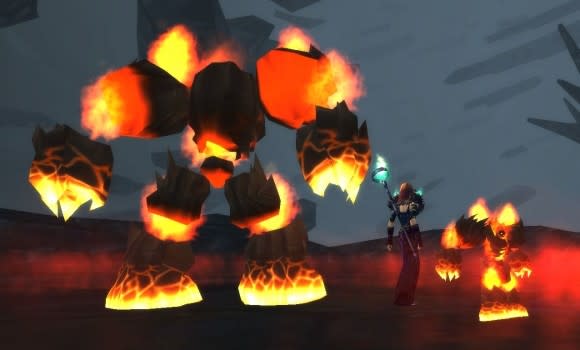
Axes and slippers
As amazing as Karazhan is, it almost became a sidenote. When players first ran the raid back in early 2007, the "epic" drops had such bad itemization that many of them were equal or inferior to dungeon blues. For most raiders, the only reason to run Kara was to see the content and fill in a few gaps in someone's gear. A few months into the expansion, Blizzard had to buff many of the instance's drops to make Karazhan's loot table more relevant to raiders.
Karazhan had some notable loot. The very first boss of Karazhan resided in the stables, so it was appropriate that Attumen dropped a mount. Midnight is still one of the rarest mounts due to its extremely low drop rate.
The Wizard of Oz encounter dropped the theme-appropriate Ruby Slippers, which could be used as a hearthstone.
Malchezaar somehow came to be in possession of Gorehowl, the famous axe of Grom Hellscream. His son Garrosh later wielded the recovered weapon during the last three expansions.
During the pre-Wrath event, a new limited-time boss set up shop in Karazhan. Tenris Mirkblood was a member of the Lich King's San'layn. He dropped a bat pet and the amazing Arcanite Ripper axe, one of the game's coolest ever weapons.
Blizzard also added several new pets to Karazhan's loot table during Mists of Pandaria.
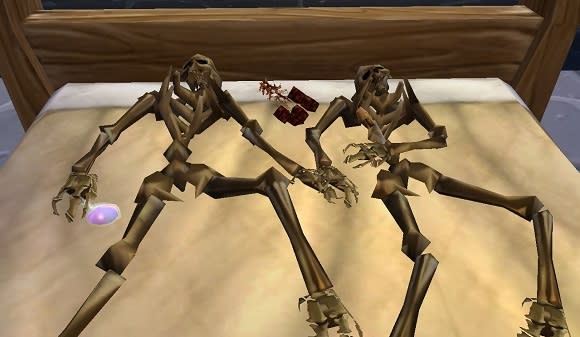
Medivh's mysteries
Like any wizard's tower worth its salt, Karazhan has its secrets and mysteries. Under the tower is a giant smiley face, presumably put there by some prankster world designer.
From the buff books in the library to "stealing the spotlight" from ghostly performers, Karazhan had a ton of small touches to be discovered.
The Karazhan crypt, already covered in detail by WoW Archivist, is one of the game's most infamous secret areas. The content has never been accessible by standard means, but enterprising players could enter the crypt through creative use of game mechanics. There, you could bear witness to massive piles of bones and dozens of drowned corpses in chains floating upside-down. The area has supposedly been fixed as of patch 5.4, so the crypts seem to be closed for business -- at least for now . . .

The curse of Karazhan
Karazhan continued to be relevant throughout the entire Burning Crusade expansion. Even raiders with Tier 6 gear still farmed it every week as the most efficient way to obtain badges. That is part of why Blizzard changed the badges system to a points system with a cap. Though players got fairly sick of Karazhan by the end of the expansion, most raiders from the era still have a soft spot for this 10-man raid.
Karazhan was a huge success for Blizzard as one of their most beloved raid zones. It legitimized the concept of the 10-man raid. Raiding guilds sprang up during The Burning Crusade purely to run Kara and Zul'Aman. Karazhan's success paved the way for the 10-man option for all raids in Wrath. Looking back, perhaps that was Karazhan's curse on WoW.
For the last two expansions, Blizzard tried to put 10-man on equal footing with 25-man raids. The fallout led to the demise of many 25-man guilds and the domination of 10-man as the size of choice for most raiders.
Ultimately, Blizzard had to admit that 10-man raiding isn't healthy for the game, at least at the highest difficulty level. It took years of data, analysis, and experimentation to reach this decision. Now many progression raiders will have to make another big adjustment, as they once did for Karazhan back in 2007.
Will Karazhan's 10-man legacy sour raiders on the 20-man future of Warlords of Draenor? Will we return to Medivh's tower in the next expansion? We are likely to find out later this year!

After months of surveying, WoW Archivist has been dug back up! Discover lore and artifacts of WoW's past, including the Corrupted Blood plague, the Scepter of the Shifting Sands, and the mysterious Emerald Dream.
